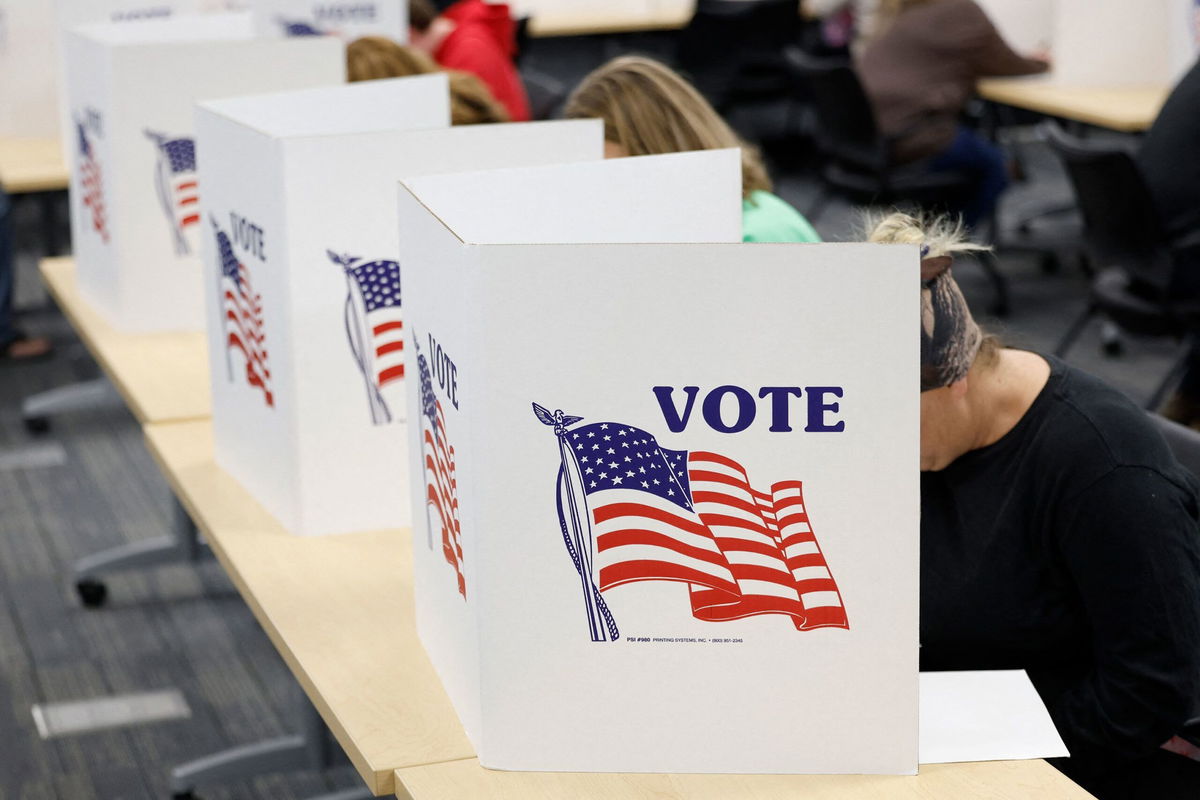More than 78 million ballots have been cast early this year. Here are 3 takeaways from pre-election voting

(CNN) — Pre-election voting is winding down across the country, with many states wrapping up in-person early voting over the weekend.
More than 78 million ballots have already been cast in 47 states and the District of Columbia, according to data gathered by CNN, Edison Research and Catalist, a company that provides data, analytics and other services to Democrats, academics and nonprofit advocacy groups, including insights into who is voting before November.
The data offers a sense of who is choosing to vote ahead of Election Day, but it isn’t predictive of election results. For instance, we don’t know who people are voting for, and the data doesn’t include the millions of Americans who will head to the polls Tuesday.
But with less than 24 hours until Election Day polls start to open across the country, here are three big takeaways from what we know about those who decided to vote ahead of November 5.
Early voting turnout is down from 2020 levels
Across the country, far fewer voters chose to vote ahead of Election Day this year compared with the pandemic-era 2020 election.
Four years ago, more than 110 million Americans voted early in person or by mail – roughly 70% of everyone who voted in that election.
We won’t know the final total number of 2024 voters for weeks, until all results are fully counted, but pre-election voting is expected to make up closer to 50% of all ballots – a split in the electorate that is more similar to the 2022 midterms.
While overall pre-election voting is down, in some states more voters chose to vote in person early than they did in 2020.
The key states of North Carolina and Georgia both saw record numbers of voters participate in early in-person voting, with the totals in Georgia exceeding the numbers from 2020. The total pre-election voting in North Carolina, however, was still lower than four years ago due to significantly fewer people choosing to vote by mail.
Mail voting was an especially popular option during the pandemic as voters chose to avoid crowds at in-person polling places. However, in both states, it’s also harder to vote by mail now than it was four years ago.
Republicans grow their pre-election vote share
Republicans have made up more of the pre-election vote than they did in 2020. The Trump campaign made more of an effort this year to encourage Republicans to vote early and by mail, a major shift from messaging against pre-election voting in 2020.
Across the 27 states for which Catalist has comparable data, registered Democrats have cast 37% of pre-election ballots, while registered Republicans have cast 35%. That’s a significant tightening in the partisan gap since 2020, when, at the same point and in the same states, registered Democrats held a 12-percentage point lead – 42% to 30%.
In four of the seven key states that will likely decide the presidential election, voters register by party, and in every one of them, Republicans have made up a larger share of the pre-election vote than they did at the same time four years ago. Democrats in these states have overall decreased their share compared with 2020.
In Arizona, 41% of pre-election voters have been Republican, a 4-point increase from 2020. Democrats have made up a share that’s 3 points less than it was four years ago, at 33%.
Nevada Republicans have increased their share by only 1 point from 2020 to 37%, while Democrats there have seen their share decrease compared with four years ago, from 38% at this point in 2020 to 34% now.
In North Carolina, where Trump rallied with supporters of the final day of his campaign, Republicans have accounted for 33% of the pre-election vote, compared with 31% in 2020. Democrats have accounted for 32%, down 3 points from their share four years ago.
And in critical Pennsylvania, Republicans have made up 33% of the pre-election vote, a whole 10 points more than in 2020, while Democrats have made up 56% – down 10 points.
Despite Republicans making up a larger share of pre-election voters so far compared with four years ago, recent CNN polling has generally shown Vice President Kamala Harris leading among voters who have already cast their ballots, including in all of the battleground states, besides Nevada.
Wide gender gap remains, but slightly narrowed from 2020
In the seven most competitive states, the gender gap looks similar to the 2020 and 2022 early vote.
Overall, roughly 1.8 million more women than men have voted early in Arizona, Georgia, Michigan, Nevada, North Carolina, Pennsylvania and Wisconsin, according to Catalist’s data. However, that gap is narrower than it was at the same point four years ago. That’s both because fewer people have voted early overall, but also because the percentage gap is slightly narrower.
Georgia has the most pronounced gender gap – women have cast 56% of the early vote in the Peach State, while 44% has been cast by men. In Arizona, 52% of the early vote was cast by women while 46% was cast by men. And in North Carolina, 56% of the early vote was cast by women to 44% for men.
Nevada had the closest gender gap – 51% of the early vote was cast by women compared with 47% by men.
In Pennsylvania, arguably the state that could decide the race, women have made up 56% of the early voters. At the same in 2022 and 2020, women had made up 57% of pre-election ballots cast.
This story has been updated with additional information.
The-CNN-Wire
™ & © 2024 Cable News Network, Inc., a Warner Bros. Discovery Company. All rights reserved.